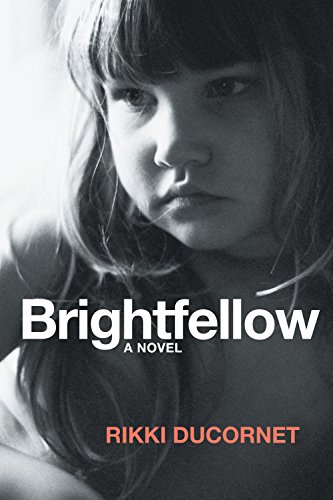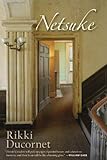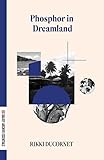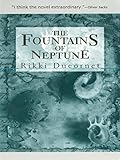
Late in Brightfellow, Rikki Ducornet’s new novel, the protagonist and titular “fellow” takes two eight-year-old girls to see Rear Window. Unsurprisingly, for those readers familiar with Ducornet, the impropriety of this outing is never discussed. Rather, the children are more upset by Jimmy Stewart’s nipples than Raymond Burr’s murder and dismemberment of his wife, “Men should not have nipples!” they insist, “no one should have nipples!.”
 This absurd and illogical world, here as in all of Ducornet’s novels, is not exactly magical realist — there is no intrusion of the fantastic into the otherwise normal here. It is also not a postmodernist world of artifice and simulacrum. Rather, her worlds are all surface and texture. Brightfellow refuses to conform to a narrative logic in which events have meaning. While Ducornet is, here and everywhere in her work, expansively erudite, her use of citation and reference does not take the form of clues, or gestures toward meaning. Her Borgesian meta- and intertexts aren’t to be interpreted; they are to be experienced. Ducornet even makes a joke of the kind of embodiment her prose evokes, when the eight-year-olds debate the logistics of body dismemberment, “They suppose the thighs look like hams and that there would have only been room for two in the suitcase. They wonder if the knees would have been attached to the thighs.”
This absurd and illogical world, here as in all of Ducornet’s novels, is not exactly magical realist — there is no intrusion of the fantastic into the otherwise normal here. It is also not a postmodernist world of artifice and simulacrum. Rather, her worlds are all surface and texture. Brightfellow refuses to conform to a narrative logic in which events have meaning. While Ducornet is, here and everywhere in her work, expansively erudite, her use of citation and reference does not take the form of clues, or gestures toward meaning. Her Borgesian meta- and intertexts aren’t to be interpreted; they are to be experienced. Ducornet even makes a joke of the kind of embodiment her prose evokes, when the eight-year-olds debate the logistics of body dismemberment, “They suppose the thighs look like hams and that there would have only been room for two in the suitcase. They wonder if the knees would have been attached to the thighs.”


 This image: grotesque and gustatory, also silly and beautiful, distills all of Brightfellow. It also evokes Ducornet’s earlier novels Phosphor in Dreamland and The Fountains of Neptune more than her last, Netsuke, which Michael Cunningham described in The New York Times as a malignant and malicious story of “soul-murder.” Brightfellow flirts with childish eroticism and terrible violence, yet, despite the Alfred Hitchcock, in it Ducornet follows Lewis Carroll and Jorge Luis Borges, more than her sometime-precursors Vladimir Nabokov or the Marquis de Sade.
This image: grotesque and gustatory, also silly and beautiful, distills all of Brightfellow. It also evokes Ducornet’s earlier novels Phosphor in Dreamland and The Fountains of Neptune more than her last, Netsuke, which Michael Cunningham described in The New York Times as a malignant and malicious story of “soul-murder.” Brightfellow flirts with childish eroticism and terrible violence, yet, despite the Alfred Hitchcock, in it Ducornet follows Lewis Carroll and Jorge Luis Borges, more than her sometime-precursors Vladimir Nabokov or the Marquis de Sade.
This novel, Ducornet’s ninth, follows its bright fellow, who we meet as a boy called “Stub,” and rejoin later as a young man calling himself Charter Chase. Stub/Charter, abandoned by his mother and then abandoning his father, winds up a feral young man on the campus of an unnamed university. His first entry into the world of the college is through the library, where he obsessively reads the works of the reclusive anthropologist Werner Vanderloon. Eventually, Stub becomes a secret resident, sleeping in a specimen cabinet in the biology lab and pilfering the left-behind contents of gym lockers and dorm rooms for an appropriately preppy wardrobe that enables him to pass as a student.
 The inevitable Giles Goat-Boy comparisons are already made by Ducornet’s blurbers, and while, in some sense, this book may resemble John Barth’s feral-boy-on-campus novel, Stub/Charter’s self-invention is a red herring. This is a coming-of-age story in a looking-glass universe, in which familiar categories are meaningless. Charter presents himself as a scholar studying Vanderloon’s papers, and so gains entry into Faculty Circle, where he eventually takes a room in the home of a lonely emeritus professor. While there, Charter conceives an obsession with a child, Asthma, who lives next door (and who, in a bit of heady referentiality, he observed through the window, and who he will take to see Rear Window). Observing Asthma, Charter muses on Vanderloon’s anthropological system:
The inevitable Giles Goat-Boy comparisons are already made by Ducornet’s blurbers, and while, in some sense, this book may resemble John Barth’s feral-boy-on-campus novel, Stub/Charter’s self-invention is a red herring. This is a coming-of-age story in a looking-glass universe, in which familiar categories are meaningless. Charter presents himself as a scholar studying Vanderloon’s papers, and so gains entry into Faculty Circle, where he eventually takes a room in the home of a lonely emeritus professor. While there, Charter conceives an obsession with a child, Asthma, who lives next door (and who, in a bit of heady referentiality, he observed through the window, and who he will take to see Rear Window). Observing Asthma, Charter muses on Vanderloon’s anthropological system:
Vanderloon divides mankind into two constants: the ones who know how to play, are full of mirth and fellow feeling and the ones who are killjoys and combustible. Play, he writes, is a powerful form of magic — sometimes white, sometimes black. But always it is born of invention and intuition. Play is about becoming a human, just as it is about becoming a lion, a tugboat, a galloping stallion. The hallway that leads away from the child’s room and into the depths of the house is a river, a glacier, a bridge to the moon.
This anthropological treatise recapitulates Charter’s own experience, when, as Stub, he imagined a linoleum floor as”
an archipelago that begins under his bed and goes all the way to his door. It shines with beauty and danger. There are flowers that have voices and sing to children. There is a poisonous toad that speaks in riddles, and the wrong sort of snake, thick as a chimney, concealed in the dappled light.
For Ducornet, the point of this description is its sensation. She wants you to feel “tugboat” and “galloping stallion” in your mouth when you read. Rear Window makes the act of viewing a film dangerously close to voyeurism.
Brightfellow suggests that the artifice of the words on the page and the voyeurism of a girl playing in a window, or an anthropologist observing some hitherto unknown society, are all there is. Ducornet’s is a world of surfaces so rich and textured that notions of meaning and interpretation are subsumed under a lush and seductive prose that eventually inhabits readers minds. Her writing inevitably gets described in a vocabulary of her creation: “decadent,” “anarchic,” and “fragrant.”
In Brightfellow, Ducornet forces readers to experience the physicality of reading, to feel and taste the act of storytelling. Every character perpetually self-invents. When Charter creates a fictive Vanderloon book about an obscure and isolated island culture, it is indistinguishable from the “real” Vanderloon texts. Vanderloon’s account of play both is and is not apt in the novel’s reading of Rear Window, which forces the viewer to share Jimmy Stewart’s voyeurism. As the film’s audience sees the film through the eyes — and the lens — of its protagonists, readers of Brightfellow feel Ducornet’s prose as Charter invents the cultures of Vanderloonian anthropology.
Ducornet has said that everything she writes is “informed by experience, experience not limited to the street, bathroom, kitchen.” This is a novel to be experienced, not simply read. Yet to say this novel refuses meaning is not to say that it lacks event. Its celebration of the texture and contours of storytelling, of the unruly expansiveness of language, and of the relative ease with which the borders of the world are permeated by fabulation offers a rebuke to a kind of fiction in which the imagination is increasingly constricted. As ever, Ducornet wants you to feel and taste her story more than to say what it is about. Like Vanderloon’s notion of play, it is about becoming human, or a tugboat.









